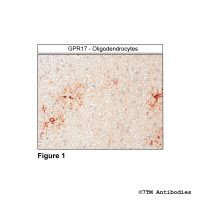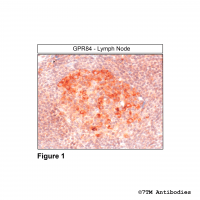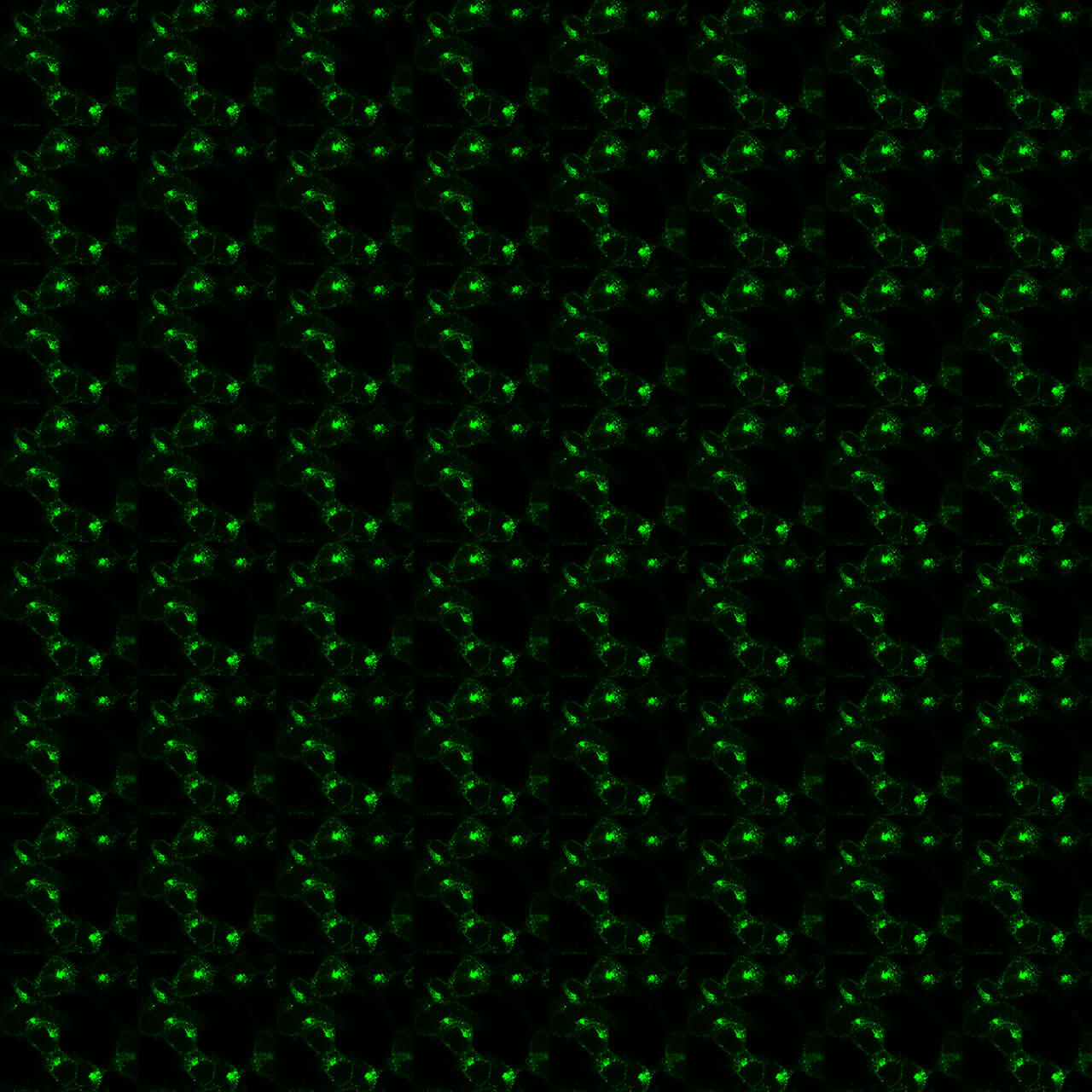No results were found for the filter!
NEW
KO-Validated
 mGPR20 (non-phospho-G Protein-Coupled Receptor...
mGPR20 (non-phospho-G Protein-Coupled Receptor... The GPR20 receptor antibody is directed against the distal end of the carboxyl-terminal tail of mouse GPR20. It can be used to detect total GPR20 receptors in Western blots independent of phosphorylation. The GPR20 antibody can also be...
$ 375.00 *
NEW
 GPR87 (non-phospho-G Protein-Coupled Receptor...
GPR87 (non-phospho-G Protein-Coupled Receptor... The GPR87 antibody is directed against the distal end of the carboxyl-terminal tail of mouse, rat and human GRP87. It can be used to detect total GPR87 receptors in Western blots independent of phosphorylation. The GPR87 antibody can...
$ 375.00 *
NEW
KO-Validated
 mGPR20 (IHC-grade), G Protein-Coupled Receptor...
mGPR20 (IHC-grade), G Protein-Coupled Receptor... The GPR20 receptor antibody is directed against the distal end of the carboxyl-terminal tail of mouse GPR20. It can be used to detect total GPR20 receptors in Western blots independent of phosphorylation. The GPR20 antibody can also be...
$ 375.00 *
NEW
 pS313-MRGPRX2 (phospho-MRGPRX2 Mas-related...
pS313-MRGPRX2 (phospho-MRGPRX2 Mas-related... Serine313 (S313) is a major phosphorylation site of the MRGPRX2 Mas-related receptor. The pS313-MRGPRX2 antibody detects phosphorylation in response to high- and low-efficacy agonists and after PKC activation. S313 phosphorylation is a...
$ 375.00 *
NEW
 pS327/pS328-MRGPRX2 (phospho-MRGPRX2...
pS327/pS328-MRGPRX2 (phospho-MRGPRX2... Serine327/Serine328 (S327/S329) is a major phosphorylation site of the MRGPRX2 Mas-related receptor. The pS327/pS328-MRGPRX2 antibody detects phosphorylation in response to high- and low-efficacy agonists and after PKC activation....
$ 375.00 *
NEW
 GPR17 (IHC-grade), G Protein-Coupled Receptor...
GPR17 (IHC-grade), G Protein-Coupled Receptor... The GPR17 antibody is directed against the distal end of the carboxyl-terminal tail of mouse, rat and human GRP17. It can be used to detect total GPR17 receptors in Western blots independent of phosphorylation. The GPR17 antibody can...
$ 375.00 *
Citations
NEW
 GPR84 (IHC-grade), G Protein-Coupled Receptor...
GPR84 (IHC-grade), G Protein-Coupled Receptor... The GPR84 antibody is directed against the distal end of the carboxyl-terminal tail of human GRP84. It can be used to detect total GPR84 receptors in Western blots independent of phosphorylation. The GPR84 antibody can also be used to...
$ 375.00 *
NEW
 GPR6 (IHC-grade), G Protein-Coupled Receptor 6...
GPR6 (IHC-grade), G Protein-Coupled Receptor 6... The GPR6 antibody is directed against the distal end of the carboxyl-terminal tail of mouse, rat and human GRP6. It can be used to detect total GPR6receptors in Western blots independent of phosphorylation. The GPR6 antibody can also be...
$ 375.00 *
NEW
 GPR12 (IHC-grade), G Protein-Coupled Receptor...
GPR12 (IHC-grade), G Protein-Coupled Receptor... The GPR12 antibody is directed against the distal end of the carboxyl-terminal tail of mouse, rat and human GRP12. It can be used to detect total GPR12 receptors in Western blots independent of phosphorylation. The GPR12 antibody can...
$ 375.00 *
NEW
 GPR15 (IHC-grade), G Protein-Coupled Receptor...
GPR15 (IHC-grade), G Protein-Coupled Receptor... The GPR15 antibody is directed against the distal end of the carboxyl-terminal tail of mouse, rat and human GRP15. It can be used to detect total GPR15 receptors in Western blots independent of phosphorylation. The GPR15 antibody can...
$ 375.00 *
NEW
 GPR22 (IHC-grade), G Protein-Coupled Receptor...
GPR22 (IHC-grade), G Protein-Coupled Receptor... The GPR22 antibody is directed against the distal end of the carboxyl-terminal tail of mouse, rat and human GRP22. It can be used to detect total GPR22 receptors in Western blots independent of phosphorylation. The GPR22 antibody can...
$ 375.00 *
NEW
 GPR25 (IHC-grade), G Protein-Coupled Receptor...
GPR25 (IHC-grade), G Protein-Coupled Receptor... The GPR25 antibody is directed against the distal end of the carboxyl-terminal tail of mouse, rat and human GRP25. It can be used to detect total GPR25 receptors in Western blots independent of phosphorylation. The GPR25 antibody can...
$ 375.00 *
NEW
 GPR27 (IHC-grade), G Protein-Coupled Receptor...
GPR27 (IHC-grade), G Protein-Coupled Receptor... The GPR27 antibody is directed against the distal end of the carboxyl-terminal tail of mouse, rat and human GRP27. It can be used to detect total GPR27 receptors in Western blots independent of phosphorylation. The GPR27 antibody can...
$ 375.00 *
NEW
 GPR32 (IHC-grade), G Protein-Coupled Receptor...
GPR32 (IHC-grade), G Protein-Coupled Receptor... The GPR32 antibody is directed against the distal end of the carboxyl-terminal tail of mouse, rat and human GRP32. It can be used to detect total GPR32 receptors in Western blots independent of phosphorylation. The GPR32 antibody can...
$ 375.00 *
NEW
 SUCNR1/GPR91 (IHC-grade), Succinate Receptor...
SUCNR1/GPR91 (IHC-grade), Succinate Receptor... The SUCNR1 receptor antibody is directed against the distal end of the carboxyl-terminal tail of human SUCNR1. It can be used to detect total SUCNR1 receptors in Western blots independent of phosphorylation. The SUCNR1 antibody can also...
$ 375.00 *
NEW
 GPR39 (IHC-grade), G Protein-Coupled Receptor...
GPR39 (IHC-grade), G Protein-Coupled Receptor... The GPR39 antibody is directed against the distal end of the carboxyl-terminal tail of mouse, rat and human GRP39. It can be used to detect total GPR39 receptors in Western blots independent of phosphorylation. The GPR39 antibody can...
$ 375.00 *
Recently viewed

